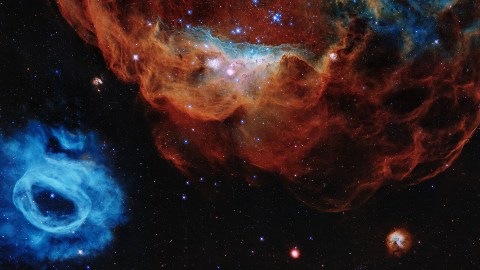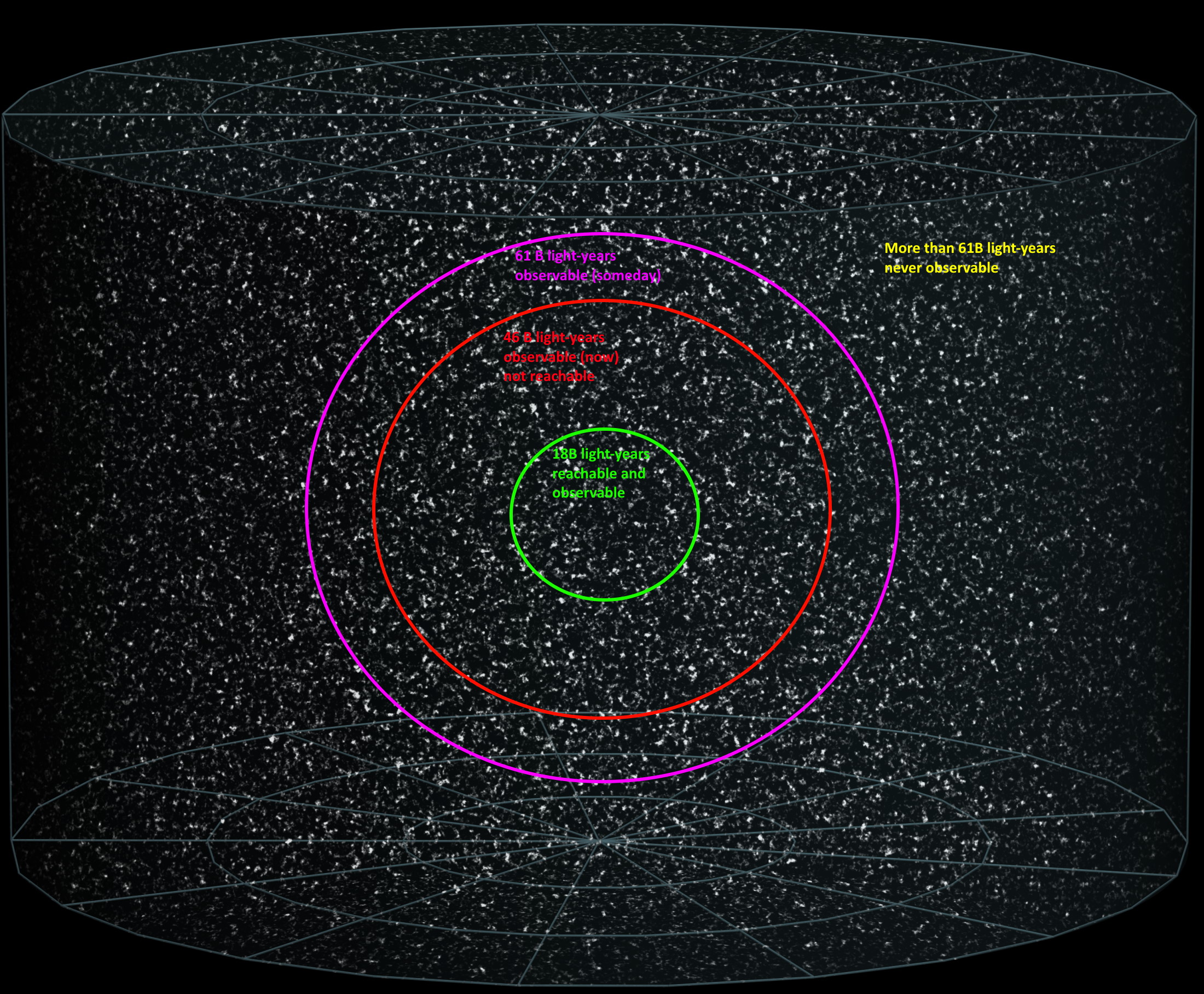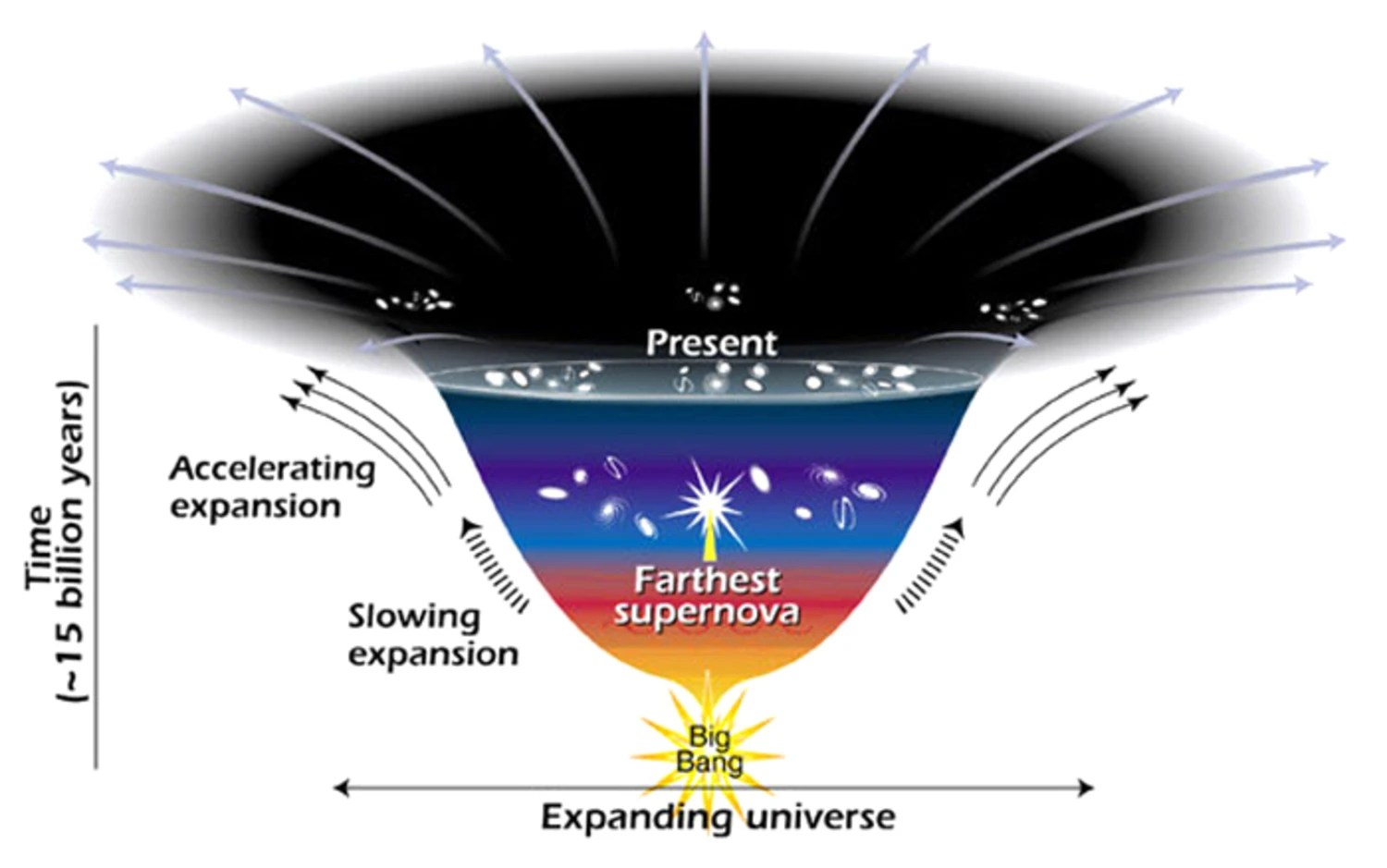95% of the Universe is a total mystery

- From the ancient Greeks to Einstein, we have studied the stars to try and figure out our place in the cosmos.
- Our current understanding of the Universe — 95% of which is invisible to us — is woefully incomplete.
- It is in our nature as humans to seek meaning in the stars. But sometimes, the answers aren’t the ones we were searching for.
For as long as humans have roamed the Earth, we have sought to find our place in the cosmos. From the city-states of ancient Greece to the soaring capstones of the Egyptian pyramids, across the deserts and towering mountains of ancient China down to the rolling plains of Mesoamerica, humans have sought to understand how the universe works. They developed mathematics to trace the motions of the planets, estimated the circumference of the Earth by walking from city to city, created star tables and timekeeping codices, and even recorded celestial events like Halley’s Comet, supernovae, and eclipses.
With time, we have refined our models of the Universe. Using ellipses, Johannes Kepler reconfigured celestial motions. Galileo revolutionized Copernicus’ heliocentric model of the Solar System by discovering that the Sun, not the Earth, is the body around which all other elements of the Solar System orbit. Isaac Newton developed the theory of gravity, which was later supplanted by Albert Einstein’s theory of general relativity.
Discovery by discovery, we paint in the gaps of the picture of our Universe; and yet somehow, with each brushstroke, that image morphs, evolving into something ever-changing, new, and unrecognizable. The Universe that Kepler and Galileo, Copernicus and Kepler, Newton and Galileo, and even Einstein understood is different from the one we know today.
Today’s understanding of the Universe is unsettling. It is not one that fits in a tidy little box with neat lines and a perfect lid. Our Universe is mystifying, complex. It defies expectations.
For starters, our Universe is not a static, enclosed entity. Our Universe is expanding. From everywhere all at once, the fabric of spacetime is stretching away from everywhere else like an inflating balloon, carrying galaxies along with it. Photons traveling the lanes of the cosmos are stretched along with spacetime, their wavelengths growing ever-longer, or redder, thus red-shifting with the expansion of space.
Our Universe isn’t expanding into anything. To our knowledge, there is no extra dimension around the Universe; rather, space itself is expanding, causing the space between galaxy clusters — the largest gravitationally bound objects in the Universe — to get bigger and bigger with time.
And this leads us to the following unsettling conclusion: there’s no center to our Universe. Everywhere is the “center” because everything everywhere is moving away from everything else, all at once.
But the Universe isn’t just expanding.
It’s accelerating.
With each passing moment, an unknown repulsive, persistent force dubbed “dark energy” is stretching the fabric of the Universe. Dark energy is a fundamental property of space itself; invisible, smooth, and constant — and yet we are entirely unsure what it truly is.
And then there is dark matter — the invisible, clumpy matter that binds galaxies together. In many ways, dark matter is the corollary to dark energy: Where dark energy stretches space apart, dark matter knits matter together. They are both invisible — neither interacts with radiation or light — and yet they are ever-present, dark matter acting as the cosmic glue for large-scale structure formation, and dark energy a principal ingredient in the Universe’s evolution.
The afterglow of the Big Bang, known as the cosmic microwave background, is imprinted on the fabric of spacetime, a relic of radiation from when the Universe was extraordinarily hot, dense, and smooth. By mapping its bumps and irregularities and comparing with galaxy surveys, scientists have found that 70% of the Universe is made up of dark energy. Meanwhile, 25% of the Universe is dark matter.
Just 5% of the Universe is ordinary matter.
That’s the ordinary matter of everyday life: your hair and clothes, your atoms and organs, the food you eat and the dogs that kiss you, the air and the sea, the Sun and the Moon. Everything we know — everything we see — is just 5% of everything in the Universe.
In many ways, we are still novices playing with toy models seeking to understand the stars.
The remaining 95% of the Universe is stuff that we can’t see, don’t yet understand. An extraordinarily vast portion of the cosmos is still unknown. Despite the technological advancements of the last century, even with computers at our fingertips and the worldwide internet and space-based observatories mapping the far reaches of our Universe, there is still so much that we don’t understand.
We have grown leaps and bounds since the days of the ancient Greeks and Egyptians, even since Copernicus and Kepler. But in many ways, we are still novices playing with toy models seeking to understand the stars.
At the end of the day, we are on a lone planet dangling in space, orbiting our Sun amidst millions of other stars in a small corner of a galaxy in an ever-expanding Universe.
It is in our nature as humans to seek meaning in the stars. But sometimes, the answers aren’t the ones we were searching for.




